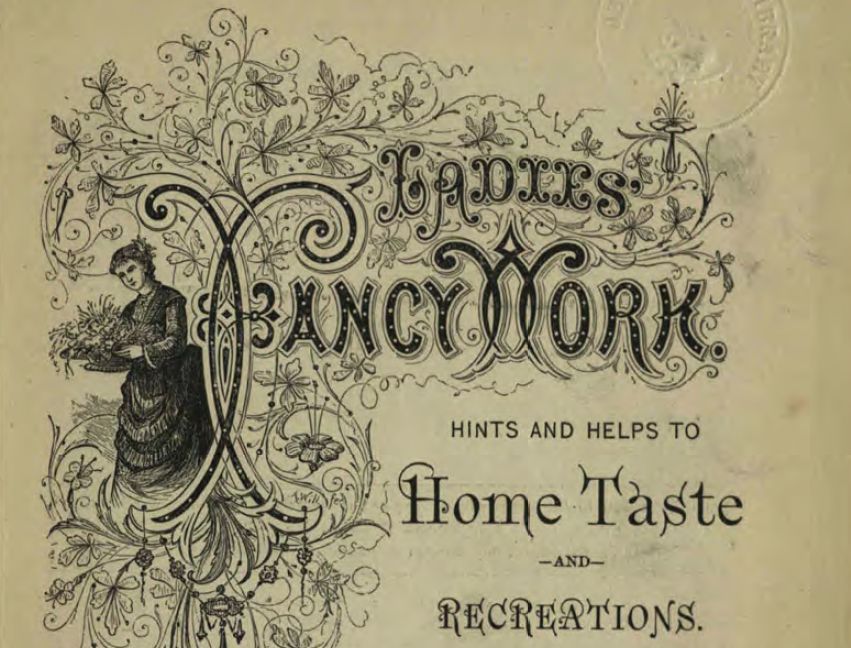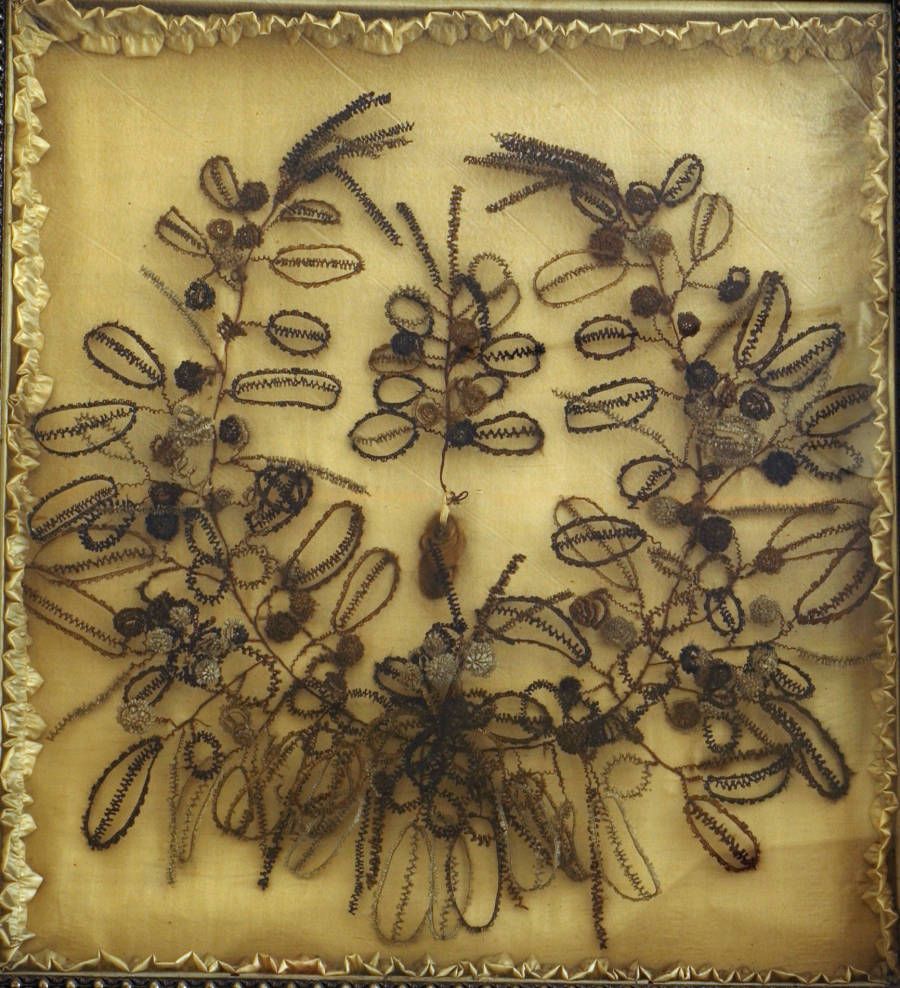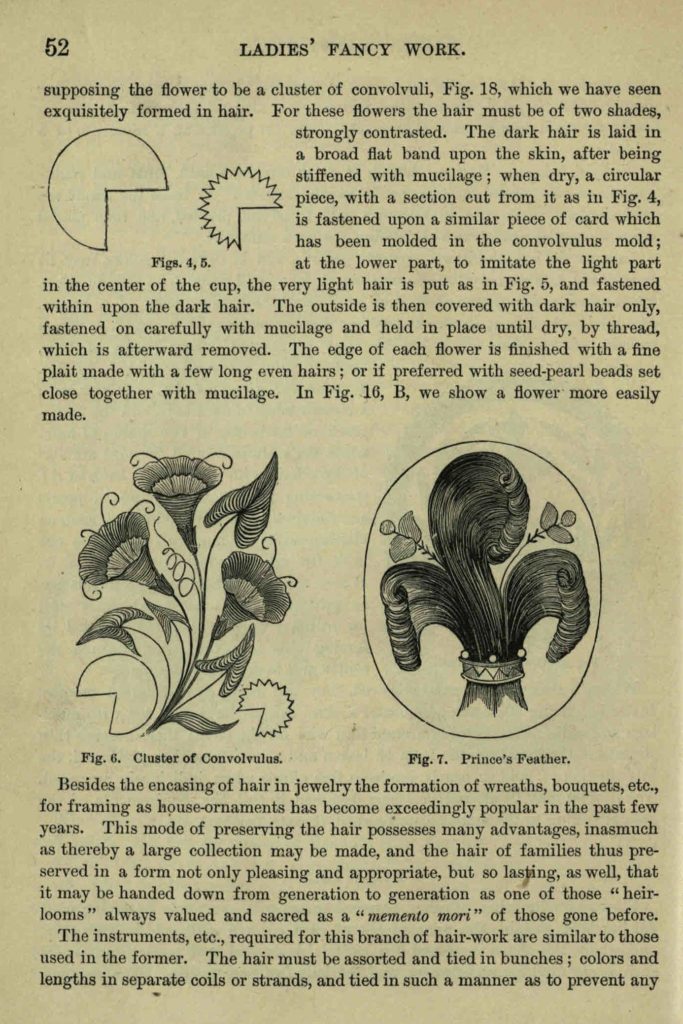Tender Remembrance: The Art of Victorian Hairwork

Near the end of the 19th century, a female member of the Loffer family of Degraff, Ohio, crafted a family heirloom, a piece of art that memorialized those loved ones who had died. It included representations of each family member, with space in the center to focus on whoever had passed away most recently. Her primary medium: human hair.

Today, the art of crafting with human hair may seem unusual at best and gruesome at worst. For middle-class women in the 19th century, however, crafting with hair was a popular pastime that produced works of art that served as both items of beauty and remembrances of friends and loved ones. “As the hair is the only part of our beloved friends that can be kept in memoriam, it is natural that we should desire to preserve the treasure in some way that will testify our appreciation of its value…” according to the authors of Ladies’ Fancywork.
Human hair had been used in art and jewelry for centuries, but the practice became particularly fashionable during the Victorian era (1837-1901), when it was not unusual for a man to wear a watch fob made of his wife’s hair, or for the locks of dead loved ones to be mounted in brooches or rings. A blog post on Victorian Gothic says “at a time of rising commercialism, sentimental hairwork became a way both to signal one’s sincerity and, paradoxically, to stay in style.”

Readers of Ladies’ Fancywork could learn tips and techniques for creating a variety of pieces using human hair, either by using a braiding frame or by wrapping hair around a wire in order to bend it into a desired shape. Simple tools, plus a good deal of patience for exacting work, resulted in intricate jewelry or pictorial works of art.
Although hairwork became far less popular after the turn of the 20th century, it has never completely fallen out of practice, and resources for study can still be found. Leila’s Hair Museum is located in Independence, Missouri, with a collection of over 2,500 examples of hairwork; the Victorian Hairwork Society has a number of links to information on preserving hairwork pieces or creating pieces of your own; and the above-mentioned Victorian Gothic blog post is an excellent starter piece on the art of hairwork.
With so many sources of information and inspiration, maybe a hairwork renaissance is in order. Let us know if you decide to give it a try!
Thank you to Shannon Kupfer, Digital Initiatives Librarian at theState Library of Ohio, for this week’s post!



Leave a Reply
You must be logged in to post a comment.